For many farmers, the long, dry, and occasionally excessively hot, summer we experienced in 2022 was a disaster. Fruit such as berries were smaller as they ripened in the heat before they had grown to their full size. In East Anglia, which was particularly hard hit by the ensuing drought, the ‘hellish’ conditions led to a race against the clock to harvest the pea crop before it withered in the sun. Even then, the yields were far lower than expected.
It appears 2022 will go down in history as something of an annus horribilis from a farming perspective. That is, of course, unless you happen to be one of the UKs saffron growers.
Saffron is not a crop readily associated with Britain. It is not for want of use of the spice itself. Saffron-coloured dishes enthralled guests at medieval feasts. Many people relish eating a yellow tinted paella or indulging in a golden chicken korma. The saffron used in these dishes may have originated in Spain or Iran, today recognised as the largest producers of this spice. Surely Britain’s climate, which usually errs towards the wetter side of temperate, is not suited to growing saffron?
It may come as a surprise to learn that saffron is grown very successfully in the UK. This is far from a new phenomenon. It is a centuries old industry run by ‘crokers’, the traditional title given to saffron farmers.
One market town in Essex, Saffron Walden, became so associated with the production and sale of this spice that it even adopted its name in the 16th century when saffron production was at its peak in England. Although cultivation of saffron in Britain had pretty much died out by the mid-19th century, it has been revived in recent years and is grown in pockets of land from Cornwall to Cheshire.
The spindly red threads we buy in little yellow packets come from the Crocus sativus plant. Unlike other crocuses, this cultivar only flowers for a short period in the autumn (around about now). The purple flowers contain three pendulous, red stamens which are dried to become the spice, saffron. Although the crocus is scented, it is only after the drying process and maturation that saffron acquires its distinct flavour and aroma.
Crocus sativus corms (bulb) thrive in free draining soil, like that found in parts of East Anglia. In an ideal world, the corms prefer a wet spring so that they can bulk up. They rather enjoy hot and dry weather during the summer months when they are dormant, so in many respects the summer of 2022 provided the perfect environment for them.
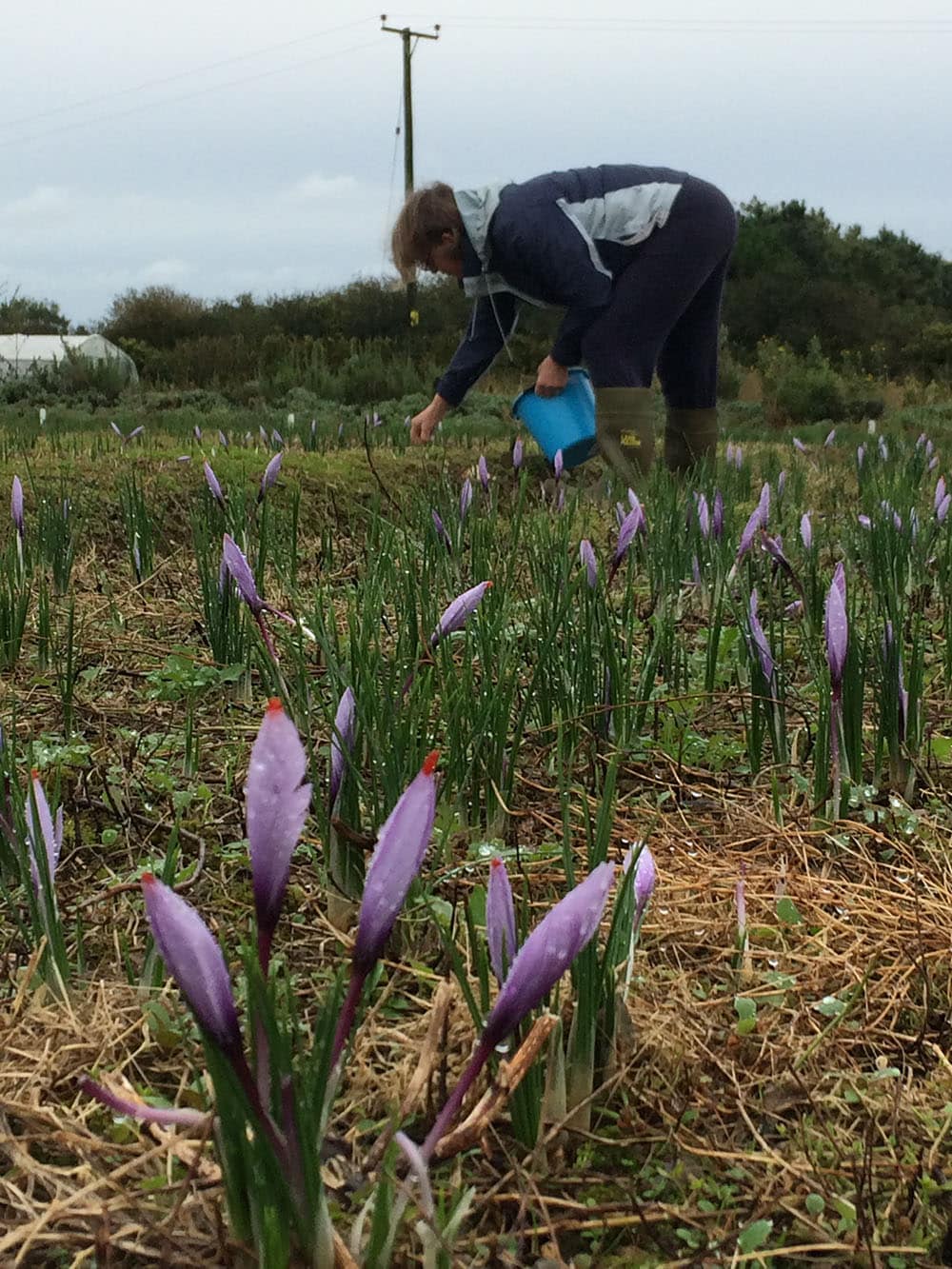
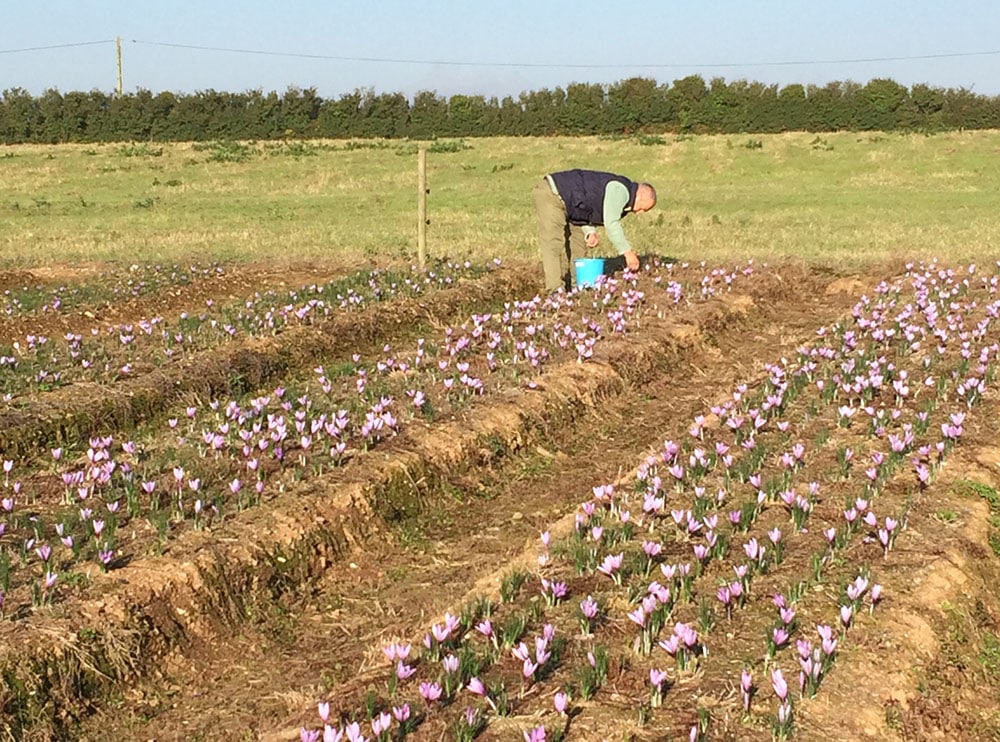
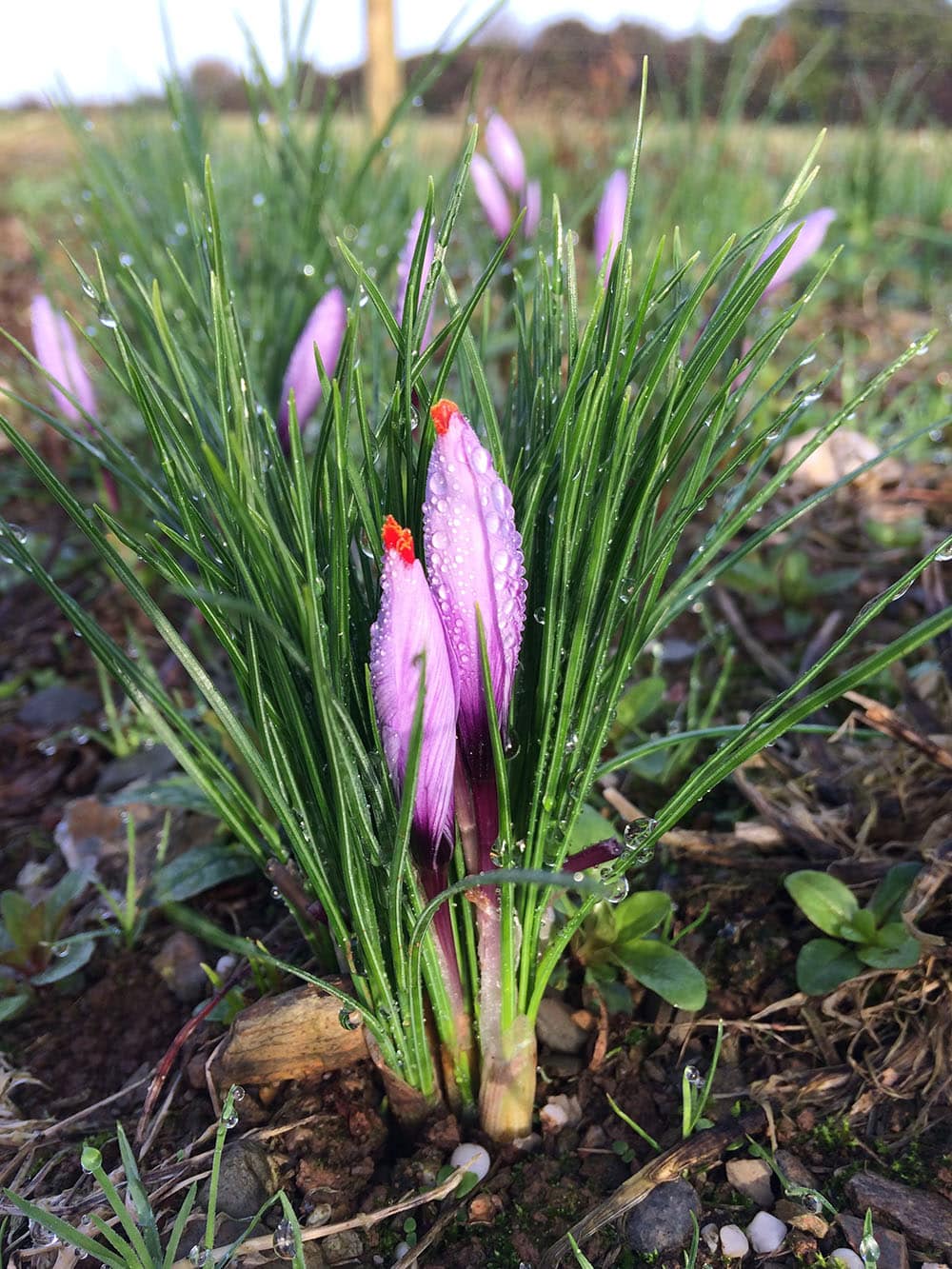
“The problem comes when either the hot weather continues into the autumn, or the hot weather starts too early in the spring,” explains David Smale of English Saffron. “That’s when damage to saffron yields and saffron corm harvests can really hurt.”
Wet weather during the harvest can also damage the delicate flowers. These are still picked by hand first thing in the morning, come rain or shine, before the blooms have fully opened. The stamens are carefully removed by hand before being dried. Every few years the corms, which multiply in the ground, are lifted by hand, and replanted in new beds. The labour-intensive nature of saffron cultivation is why the spice is so expensive. It is just as well a little of it goes a long way.
Like many crops, saffron is subject to several threats. Rabbits, mice, and deer have been a perennial problem for centuries, so the saffron beds need to be protected from these intruders. Corm rot, similar to potato blight, is also a potential problem and can devastate a crop. So too is a species of nematode, a microscopic pest that feeds on the roots and base of the corm causing it to shrivel and rot.
Brian Eyres, owner of The Cornish Saffron Company, on Cornwall’s Roseland peninsula, plants tagetes or marigolds along the rows to deter this particular pest. The risk of fire has been heightened by the arid summers experienced in recent years.
“The fire risk is more of an issue than the temperature itself or lack of rain,” says Sally Francis of Norfolk Saffron. “Our land contains flints. Striking one with a cultivator could have caused a spark and set light to the dry vegetation.”
Saffron farming methods have changed little over the centuries. Granted, machinery can now be used to prepare the land. And the crocus stamens are now dried in a dehydrator rather than over a charcoal fire used in previous eras. Otherwise, it remains a hands-on process that results in a high-quality product.
“People are more interested in the fact that my saffron is locally-produced using traditional, sustainable methods,” explains Francis.
To this end, modern crokers do not feel the need to acquire organic accreditation.
“We don’t see the need for this,” explains Peter Gould, co-director and grower at The Cheshire Saffron Company. “We manage our land and crop in the right way using things like seaweed fertiliser, which the saffron crop loves.”
Saffron growing has always come with a certain element of risk from the elements, wildlife and fluctuating prices of the spice. Today’s saffron growers are optimistic that the 2022 harvest will be good and that further hot, dry summers will bode well for future crops, providing of course there is no drought in the spring.
This year’s red-gold harvest will be celebrated at a dedicated Saffron Day on 16 October in Saffron Walden.

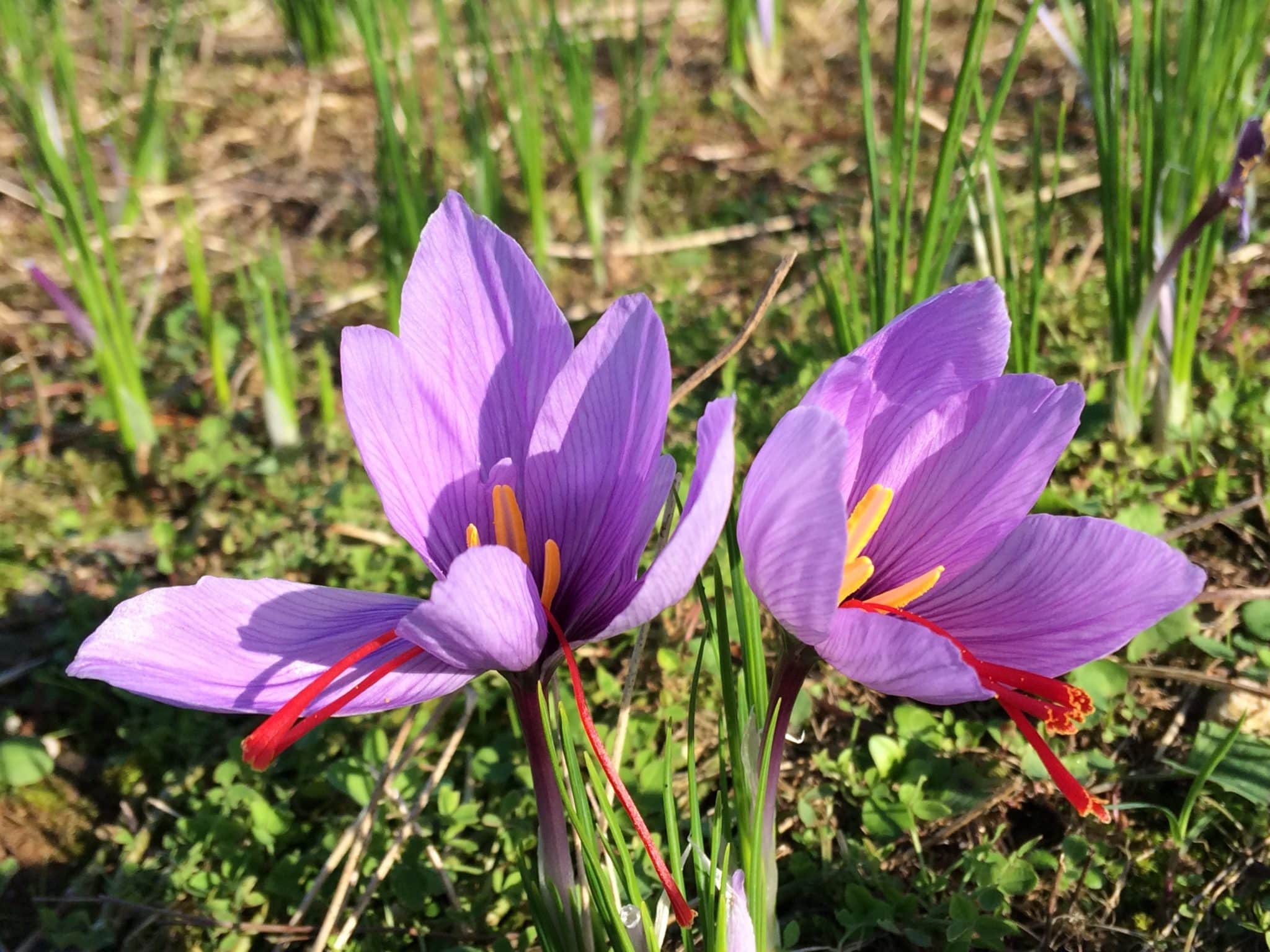

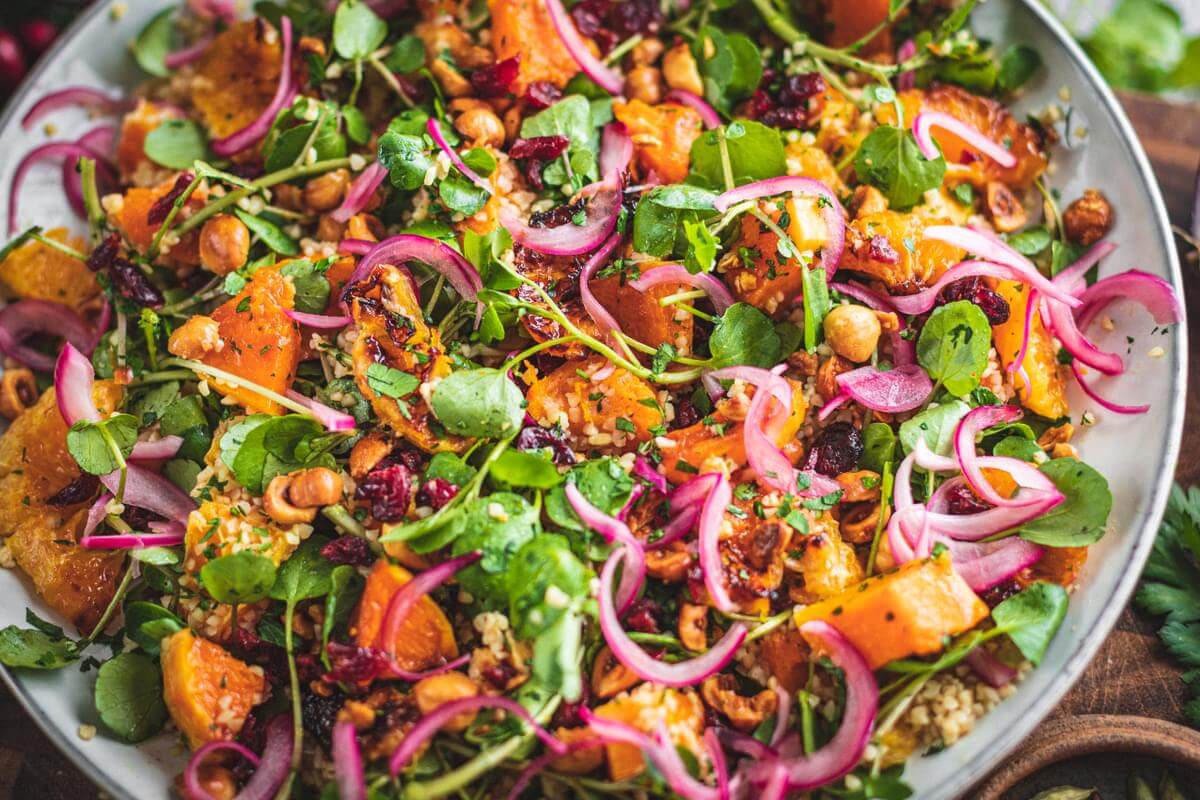
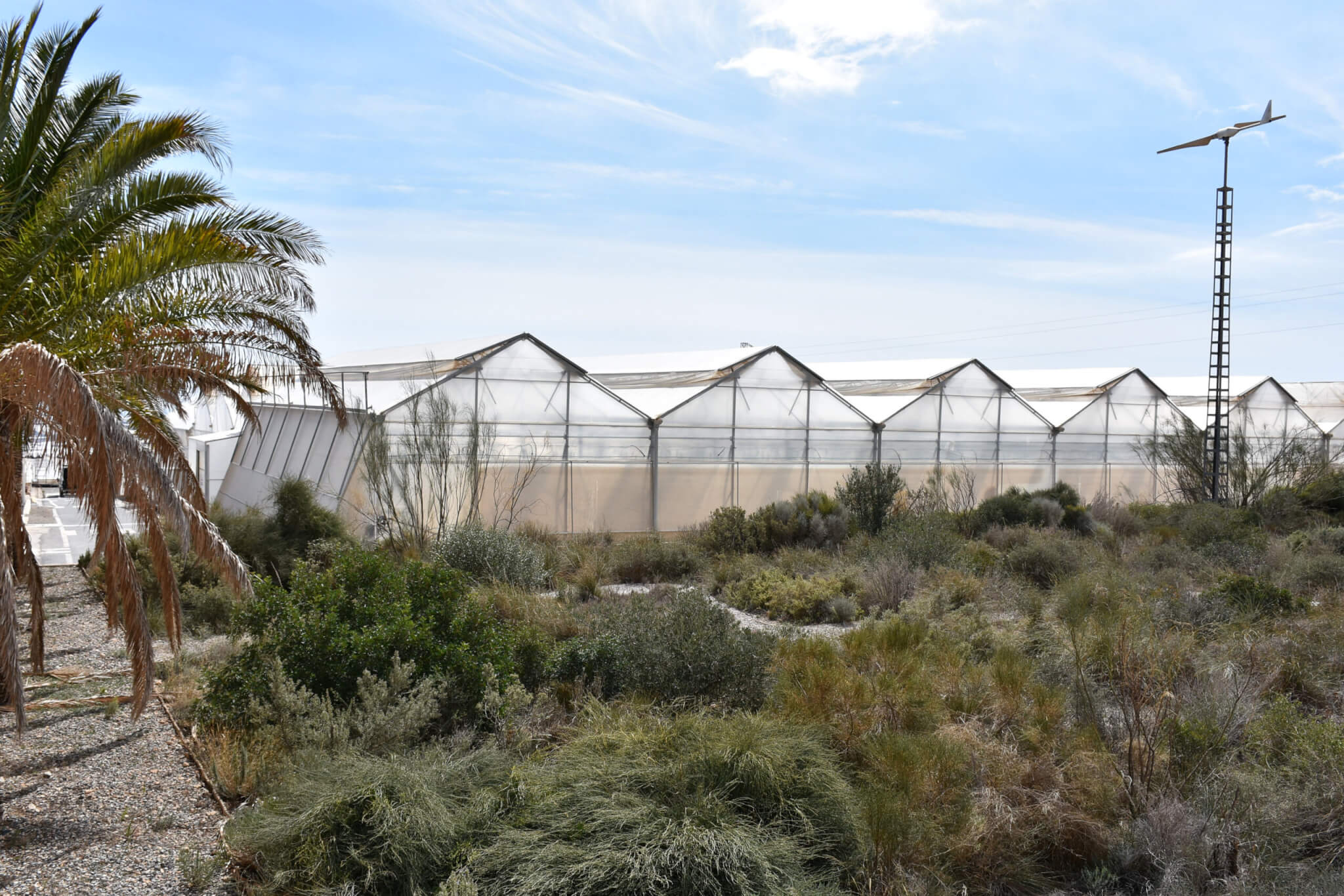




0 Comments